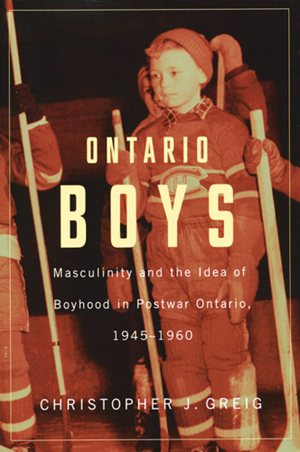Ontario Boys: Masculinity and the Idea of Boyhood in Postwar Ontario, 1945-1960

Support Canada's History in other ways (more)
by Christopher J. Greig
Wilfrid Laurier University Press, Waterloo, Ontario, 2014
212 pp., $39.99 paperback
What does it mean to be a boy? For anyone who lived in the wake of the Second World War, an “ideal” boy was selfless, honest, fearless, determined, and emotionally tough, according to University of Windsor professor Christopher J. Greig.
In Ontario Boys, Greig explores the making of an “ideal” boy between 1945 and 1960 by examining periodicals, newspapers, books, advertisements, and commentaries published in the province during those years.
At the time, Canada was dealing with uncertainty, insecurity, and gender anxiety from economic instability and war. Greig, who teaches in the faculty of education, says this ideal boy was born out of a need for normalcy in social turbulence. For example, he points to an article about “successful” families in a 1960 issue of Chatelaine that tried to reinforce traditional gender roles. “The researchers suggest that where there is a reversal or confusion of tasks, with the mother taking over some of the father’s work and the father doing an immoderate proportion of traditionally feminine tasks, such as housework, there will be a poorly functioning family,” the article said.
Although the postwar years have passed, Greig says we’re still dealing with similar anxieties. Postwar beliefs about masculinity shaped the beliefs, attitudes, and opinions about boyhood of the children who grew up during that era; today, those people are Canada’s leaders.
Greig concludes by challenging readers to rethink their ideas about gender roles and to think about the relationship between boys, men, girls, and women.
— Danelle Cloutier (Read bio)
Danelle Cloutier is a Red River College student in Winnipeg and recently completed an internship at Canada's History magazine.